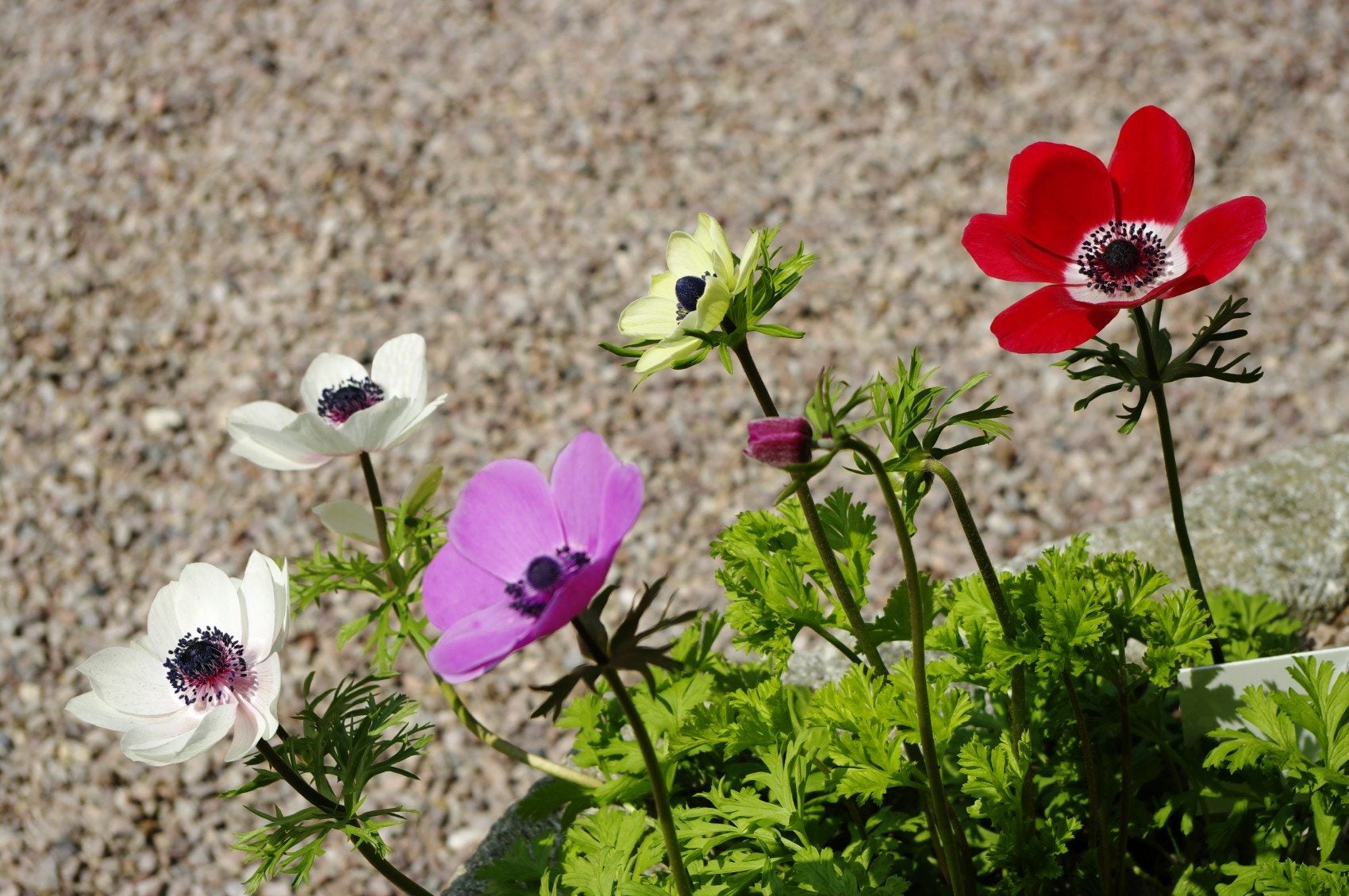Information On Care Of Anemone Plants


Anemone plants have low clumping foliage and colorful blooms. Often referred to as windflowers, these carefree plants are commonly found dotting the landscapes of many home gardens. There are several types of anemones, both spring flowering and fall blooming varieties. What's interesting, and even a factor in anemone plant care, is how each of these types grow. For instance, the spring blooming anemone plants will generally grow from rhizomes or tubers. Fall flowering types, however, usually have fibrous or tuberous roots.
Growing Anemone Windflower
You can grow anemones just about anywhere. However, caution should be taken with respect to their location, as their spreading growth habit can become rather invasive. Therefore, when growing anemone windflowers, you may want to consider placing them in bottomless containers prior to putting them in the garden. That being said, anemones are planted in spring or fall, depending on the type you have. Before planting, soak tubers overnight and then place them in well-draining, fertile soil-- preferably in a slightly shaded area. Plant anemones about 3 to 4 inches (8-10 cm.) deep, on their sides, and space them about 4 to 6 inches (10-15 cm.) apart.
Anemone Flowers Care
Once established, care of an anemone consists of merely watering as needed and keeping old foliage removed by cutting back to the ground prior to new growth. Rhizomatous clumps can be divided every two to three years during spring. Tuberous types are best separated during their dormant period, usually in summer.
Gardening tips, videos, info and more delivered right to your inbox!
Sign up for the Gardening Know How newsletter today and receive a free copy of our e-book "How to Grow Delicious Tomatoes".

Nikki Tilley has been gardening for nearly three decades. The former Senior Editor and Archivist of Gardening Know How, Nikki has also authored six gardening books.
-
 Zinnias On Repeat: 10 Glorious Cut-And-Come-Again Varieties For Endless Summer Bouquets
Zinnias On Repeat: 10 Glorious Cut-And-Come-Again Varieties For Endless Summer BouquetsThese zinnia varieties keep giving all summer, making them the perfect choice for dedicated cutting gardens – or just the occasional homegrown bouquet.
By Ellen Wells
-
 Create A Romantic Garden Straight Out Of Bridgerton: Regency Era Romance In Your Garden
Create A Romantic Garden Straight Out Of Bridgerton: Regency Era Romance In Your GardenTry some romantic garden ideas straight out of Bridgerton. Flowers and gardens in the Regency era were lush and charming and you can get the same look!
By Bonnie L. Grant
-
 Thimbleweed Information: Growing Anemone Thimbleweed Plants
Thimbleweed Information: Growing Anemone Thimbleweed PlantsTall erect stems and deeply cut leaves topped with creamy white flowers describe tall thimbleweed. The fun thing about this plant is its long bloom season, from spring to early fall. Click here for some tips on how to grow thimbleweed and enjoy them in your garden.
By Bonnie L. Grant
-
 What Are Grecian Windflowers – How To Grow Anemone Windflowers
What Are Grecian Windflowers – How To Grow Anemone WindflowersBy growing Grecian windflowers, you can add a pretty new perennial to your garden. This spring bulb comes in range of colors, providing low clumps of blooms that easily fit into a variety of garden types and climates. Learn more in this article.
By Mary Ellen Ellis
-
 Japanese Anemone Care: Tips For Growing A Japanese Anemone Plant
Japanese Anemone Care: Tips For Growing A Japanese Anemone PlantJapanese anemone is a tall, stately perennial that produces glossy foliage and big, saucer-shaped flowers. They are a cinch to grow and adaptable to most growing conditions. Click the article that follows to learn more about growing a Japanese anemone in your garden.
By Mary H. Dyer
-
 Anemone Varieties: Different Types Of Anemone Plants
Anemone Varieties: Different Types Of Anemone PlantsA member of the buttercup family, anemone, often known as windflower, is a diverse group of plants available in a range of sizes, forms, and colors. Click this article to learn more about tuberous and non-tuberous types of anemone plants.
By Mary H. Dyer
-
 Growing Wood Anemone Plants: Wood Anemone Uses In The Garden
Growing Wood Anemone Plants: Wood Anemone Uses In The GardenAlso known as windflower, wood anemone plants are low-growing wildflowers that produce dainty, waxy blooms rising above attractive, bright green foliage in spring and summer. Find out how to grow wood anemone plants in this article.
By Mary H. Dyer